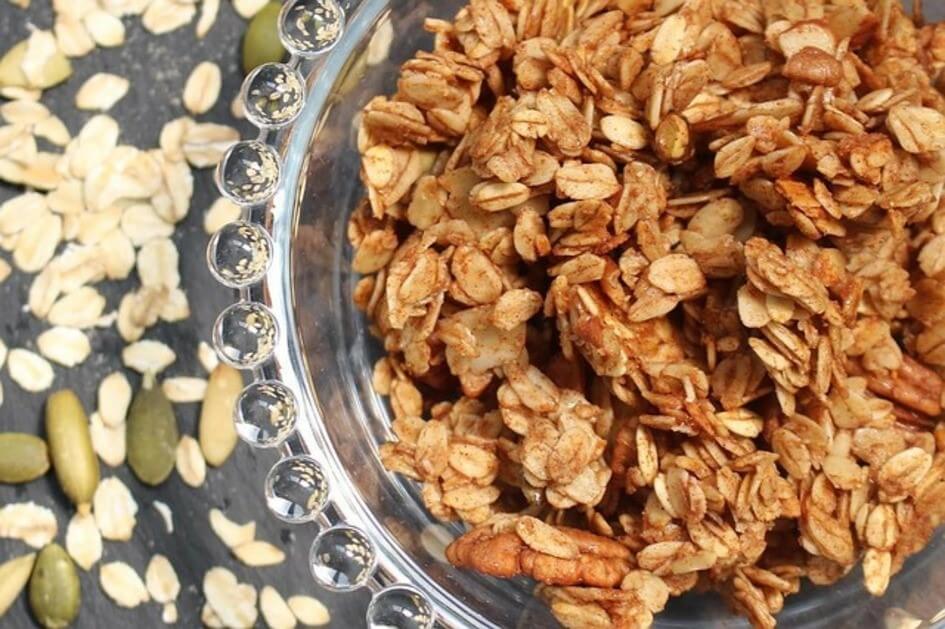Highlights:
Strategies to make cereal more snackable include:
- Reducing the amount of sugar
- Making cereal a larger, more snackable size
- Packaging cereal in portable pouches
- Focusing on healthy ingredients

Designing ready-to-eat (RTE) cereals to be more snackable may be the perfect opportunity to reinvigorate cereal sales amidst breakfast time competition like yogurt, bars, and on-the-go breakfast sandwiches.
Strategies to make cereal more snackable include:
While RTE cereal is known for its almost universal household penetration in the North America and Western Europe, the estimated $18.4 billion market in those regions has been basically flat for the past 5 years with only 0.4% CAGR since 2016.1 Increasingly, consumers are turning to alternative breakfast options with better portability and satiety.
For many consumers, cereal for breakfast doesn’t provide enough energy or keep them full for long enough. Savvy consumers know to check the nutrition label for nutrients like protein and fiber. Greek yogurt scores high on protein, while cereal bars do well on fiber and some nutrition bars can provide both. All are portable, unlike a bowl of cereal with milk.
Though the breakfast meal may be evolving, there’s no reason for cereal to be left behind. Cereal is already bite-sized and can easily be made portable by packing it into an on-the-go container to take to school or work. With more than half of global consumers consider snacks to be 1) single serve, 2) offers a nutritional boost or 3) can be consumed on the go2, cereal is the perfect base for innovation in the snacking space from a nutritional, application and packaging perspective.
The pandemic has also helped to boost cereals appeal to consumers. According to Mintel, 40% of US consumers indicated they increased consumption in 2020.3 Now is a great time for cereal or snacking brands to innovate new snackable cereal options.
In the UK, 41% of cereal consumers indicated they changed their choice of cereal in an effort to reduce sugar intake.4 Mintel also found that the majority of U.S. cereal consumers preferred lightly sweetened cereals over both highly sweetened and unsweetened cereals.5 In fact, across the food and beverage industries, reduced sugar products have been trending since the roll-out of the new nutrition label, which requires the amount of added sugars to be stated. This change has made consumers more aware of the amount of sugar in products.
The popularity of lightly sweetened cereal indicates not just a health preference but a taste preference, as well. A snackable cereal that tastes either bland or as sweet as a confection is unlikely to meet consumer expectations.
The ideal snacking cereal should be as easy to eat as chips or crackers. Clusters and large individual pieces both work well for this. A number of granola manufacturers have developed granola clusters that are advertised as both a breakfast cereal and a snack. The innovative size of granola clusters positions it between traditional granola and granola bars.

To make cereal truly snackable, packaging matters. Single-serve packaging and re-sealable pouches ensure consumers can just grab and go.
When consumers choose cereal as a snack, the perception is that it’s a healthier, more nutritious choice than traditional snacks (like candy or potato chips) that can have a nutrition label high in sugar, salt, or fat. Also, consumers are increasingly looking for fiber and protein in their cereal. A high protein option, like Crunchie™ Milk Protein Bites are an easy way to pack protein into extruded cereals.
Consumers typically expect their cereal to contain vitamins and minerals, as well. Using a Custom Premix Solution is a simple way to add, increase, or customize vitamin and mineral levels to meet the needs of different consumers, such as children or athletes. Manufacturers should be sure to use marketing copy and front-of-package claims to promote their cereal as a healthy snack.
The love of RTE cereal, combined with the array of options available for taste, texture, size, ingredients, and nutrient levels, suggests that cereal is well-positioned to evolve with the times. For breakfast time, snack time, or anytime.
Partner with Glanbia Nutritionals to boost your nutrition label and make your cereal even more snackable! Interested in learning more about Glanbia Nutritional solutions for cereals & snacking, contact us today for a personalized presentation.